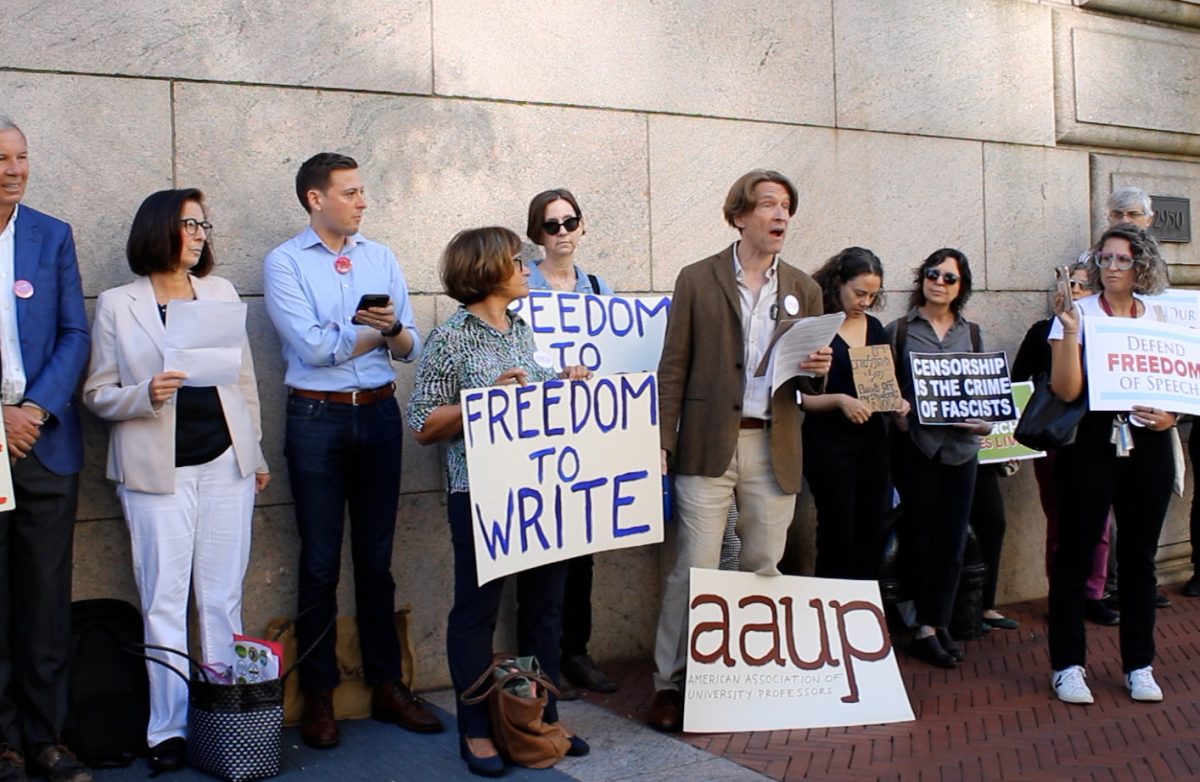
At the Forum on Image and Language in Motion (F.I.L.M.) event on Sunday, Ernie Gehr came to Hamilton to showcase some of his new digital video works. I had never been to an F.I.L.M. event before, but I will definitely return for future events. Many of the students I ran into before the event indicated to me that they were there for a class, one in which they had been studying Gehr’s work. I think it is absolutely wonderful that Hamilton has the resources and ability to not only show Gehr’s work, but to bring him to campus so that students in film studies courses can have the opportunity to interact with a filmmaker.
Scott MacDonald, the professor who introduced Gehr, commented that at the beginning of his career, he did not realize that film can accomplish so much beyond telling a story. That is to say, Gehr’s work is not so much cinema as a form of storytelling, but more so cinema as a form of critique (my friend in a film studies class told me this was the case). Ernie Gehr only recently switched to digital film because it is inexpensive and quick, and so it has become difficult to keep up with all the new work he is producing. Thus, it was a treat to experience four of his recent films in one sitting.
Three of his four pieces were shot using a handheld digital video camera. The first piece we viewed,
Sensations of Life (7)
was an eight-minute long, purely digital film. The film consisted of a rectangle and flashing lights; it was completely abstract. His film addressed his fascination with light as medium because, in his words, “without light there is no cinema.” Gehr bases his films on his own personal experience. He also discussed viewing this film as a metaphor, in that the rectangle is within the rectangular screen which is within the room that we viewed the film in. The flashing lights were intended to activate and reactivate the room.
The second Gehr film that was shown,
Autumn
, which he recently completed, makes use of a lot of reflection. The film was shot in straight recordings on the Lower East Side of Manhattan, where Gehr used to live. When I was watching it, I originally thought it was a commentary on people performing daily tasks in New York City and not really observing the changes of autumn. For Gehr, though, the film is a commentary on the dramatic transformation that urban spaces undergo. None of the shots were staged, but rather taken when he happened to have his camera. His interest in reflections is awesome because in the film we saw two things happening at once. Gehr’s fascination comes from his belief that people often look past glass, and his film makes us aware of the world that glass and urban architecture reflects.
His other two films that were shown,
Transport
and
A Commuter’s Life (What a Life!)
, work to make experiences that are typically over-looked available.
Transport
works to move through a space and notice what is there, while focusing on things in a particular way.
A Commuter’s Life
reflects the cyclical nature of commuting and how the round trip blends into one; the footage for that film was actually taken on Gehr’s own commute. This reinforces his love for the moving image and the idea of personal cinema. Gehr thinks of his films as little valentines that he leaves for other people to enjoy and reflect upon. He mentioned that he wants people to reflect on the issues of the world at present, but that he wants his films to transcend that and help the viewers to develop a responsiveness to our environment.

















